| Columns Retired Columns & Blogs |
John, what kind of load resistors do you use in testing? Obviously, they can take way more than 1kW per channel.
I measured the hefty Ovation MA8.2 monoblock with my Audio Precision SYS2722 system (see the January 2008 "As We See It"). Before doing any testing of a power amplifier, I precondition it by running it at one-third its specified power into 8 ohms for 60 minutes. (With an amplifier having a class-B or -AB output stage, this power level results in the highest thermal stress on the output devices.) After an hour driving 200W into 8 ohms, the temperature of the MA8.2's heatsinks was a moderate 125°F (51.6°C), and its the top panel was warm, at 107.8°F (42.1°C). The front-panel meter was accurately calibrated, reporting as "199.6W" an actual level of 198.8W into 8 ohms.
The voltage gain into 8 ohms for both the balanced and unbalanced inputs was 29dB, and both inputs preserved absolute polarity, the XLR jack being wired with pin 2 hot. The input impedance was slightly lower than the specified figures, at 9k ohms unbalanced and 14k ohms balanced, both values consistent from 20Hz to 20kHz. The output impedance (including 6' of cable) was very low, at 0.08 ohm at 20Hz and 1kHz, rising very slightly to 0.1 ohm at 20kHz. As a result, the response with our standard simulated loudspeaker varied by just ±0.05dB (fig.1, gray trace). This graph, taken with a balanced input (the unbalanced behavior was identical), shows that the audioband response is flat into 8 ohms (blue trace), with the ultrasonic rolloff reaching –0.5dB at a very high 100kHz. The response rolled off earlier into lower impedances, reaching –1.8dB at 100kHz into 2 ohms (red trace), but was still flat up to the top of the audioband. The AVM's reproduction of a 10kHz squarewave was therefore excellent (fig.2), with short risetimes and no overshoot or ringing.
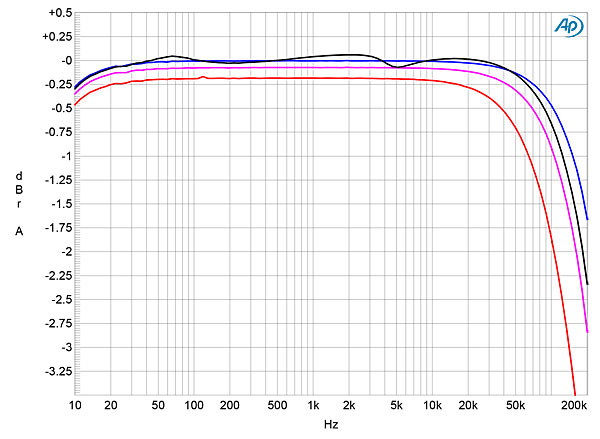
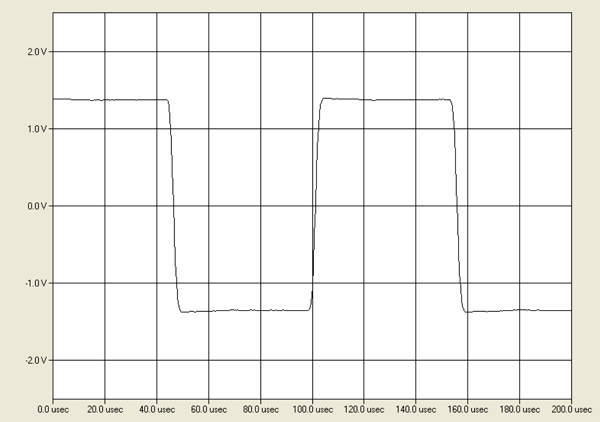
With those massive toroidal transformers close to the audio circuitry, I was not surprised to find in the MA8.2's output some supply-related artifacts at 60Hz and its odd-order harmonics (fig.3). These will be due to magnetic interference, but it's fair to note that although they're visible in this graph, they all lie at or below –100dB ref. 1W into 8 ohms. The wideband signal/noise ratio ref. 1W into 8 ohms, taken with the input shorted to ground, was okay, at 74.6dB, but this improved to 82.9dB when the measurement bandwidth was restricted to the audioband, and to 84.3dB when A-weighted.
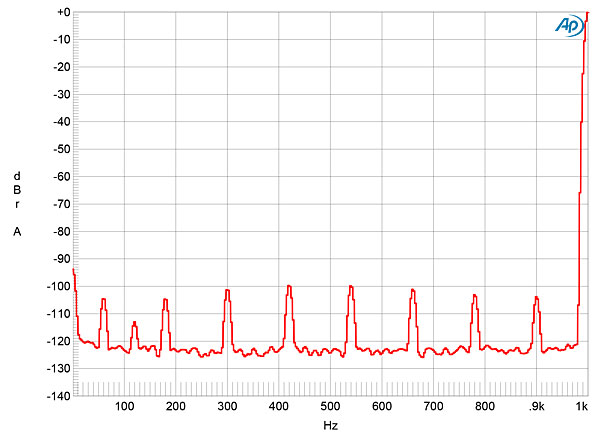
The AVM amplifier is rated to produce >600W into 8 ohms. Fig.4 shows that it didn't actually clip (defined as when the THD+noise reaches 1%) until 805W (29.1dBW), at which power output the AC wall voltage in my test lab measured 121.1V. The downward slope of the trace below 100W into 8 ohms in this graph indicates that the actual distortion lay below the noise floor at powers less than 100W. Into 4 ohms (fig.5), the MA8.2 clipped at 1320W (28.2dBW); into 2 ohms, it clipped at 1820W (26.6dB, not shown), even though at this power output the wall voltage had dropped to 115.8V.
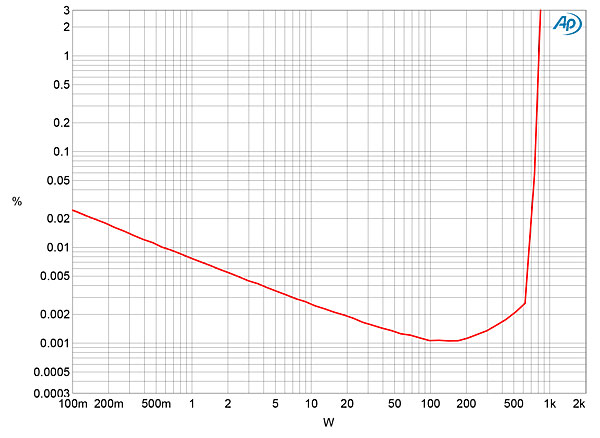
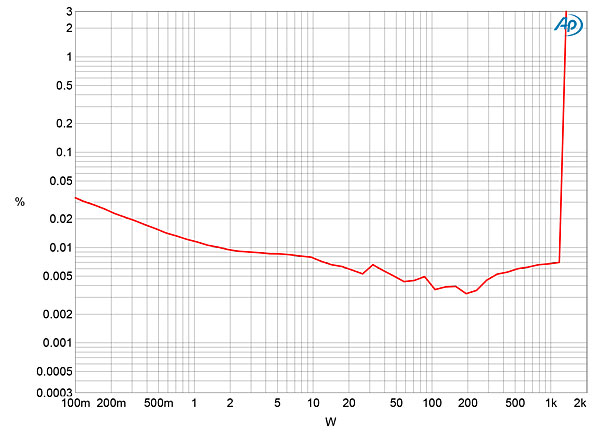
I measured how the percentage of THD+N varied with frequency at 28.3V output, which is equivalent to 100W into 8 ohms, 200W into 4 ohms, and 400W into 2 ohms. The results are shown in fig.6: The distortion is very low overall, but does rise into 4 and 2 ohms and in the top octaves and, to my surprise, below 50Hz. The distortion is primarily the third harmonic (fig.7), and, even at a very high power into 4 ohms (fig.8), doesn't rise above –90dB (0.003%). However, you can see in this graph the low-level, supply-related spuriae, which also appeared when I tested for intermodulation distortion (fig.9). But note how low are the actual intermodulation products in fig.9, despite the very high power. The high-order products are all at or below –96dB (0.0015%), and the second-order, difference product at 1kHz can't be seen at all above the level of the low-frequency supply spuriae.
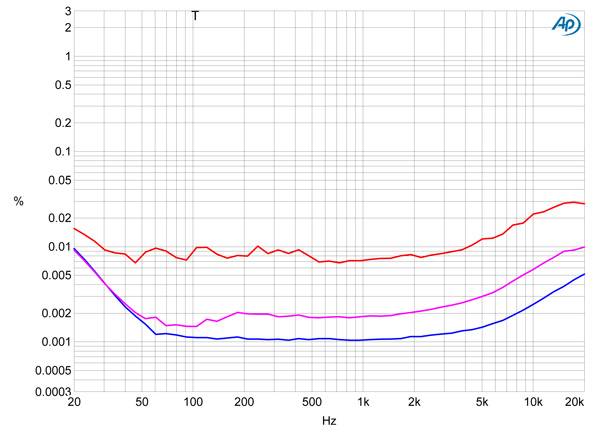
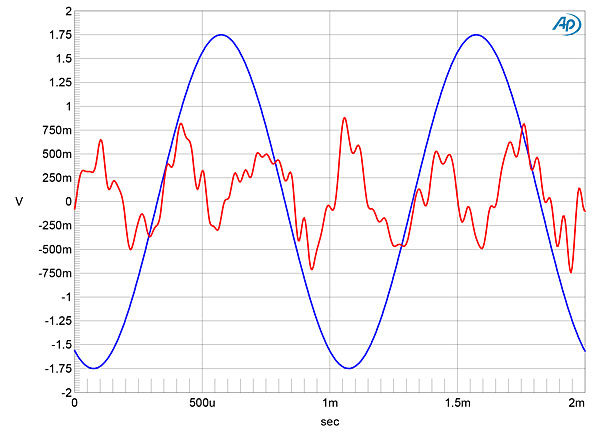
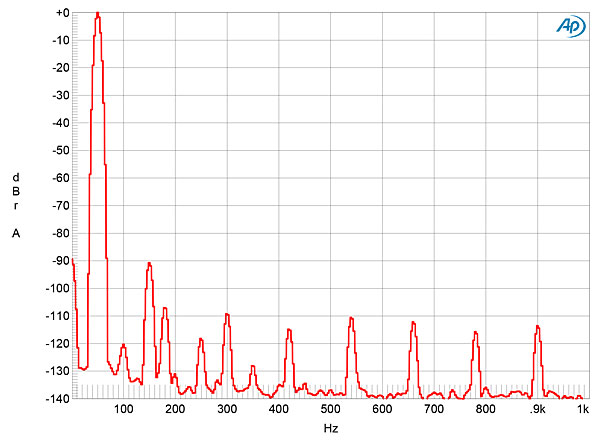
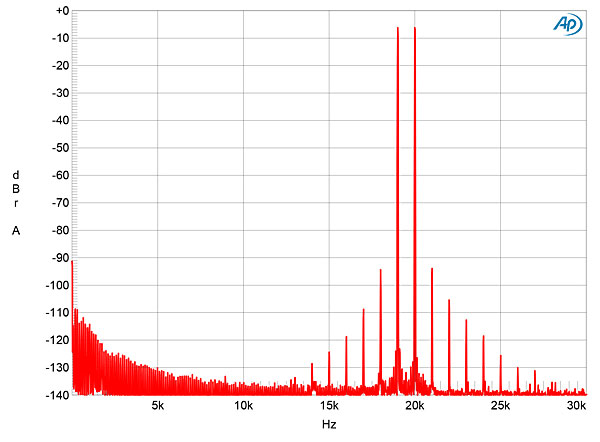
After having had some, shall I say, "idiosyncratically engineered" amplifiers pass through my test lab in recent months, it was a pleasure to measure such a well-engineered, conservatively specified amplifier as AVM's Ovation MA8.2.—John Atkinson

John, what kind of load resistors do you use in testing? Obviously, they can take way more than 1kW per channel.

John, what kind of load resistors do you use in testing?
For testing high-power amps I use an array of four non-inductively wound 8 ohm resistors, each with its own heatsink, mounted on an aluminum plate. They are connected in series-parallel to give a combined load of 8 ohms.
Obviously, they can take way more than 1kW per channel.
Only in the short term.
John Atkinson
Editor, Stereophile

Hi JA
In figure 8 there is an enharmonic peak at 180 hertz
Do you know what this is....power supply multiple ?